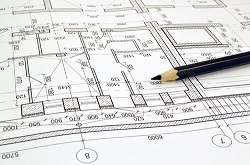
Altering current building designs so that they meet 2025 net zero standards would add value and save costs in the longer term, according to a report by the UK Green Building Council (UKGBC).
Investigating the implications of designing for net zero today, the study looked at two real-life buildings at design stage, one residential block and one office building.
The team, which included engineers, designers and cost consultants, considered the base designs and produced two further design iterations for each. One focused on an 'intermediate' scenario, looking to meet 2025 energy and carbon efficiency targets, and the second on a 'stretch' scenario with more ambitious 2030 targets in mind.
To meet the 2025 targets, the residential block design was altered to replace traditional gas boilers with air source heat pumps, improve fabric insulation and reduce windows to minimise heat loss. Changes to the office building design included replacing a conventional steel and concrete structure with hybrid steel and cross-laminated timber in the superstructure, removing suspended ceilings and installing active chilled beams.
The cost uplift was 3.5% for the residential building and 6.2% for the office building. These costs are 'relatively marginal' and likely to be at least recouped through associated increases in rental and capital value, as well as reduced operational costs, UKGBC said.
Unsurprisingly, the design changes required to meet the 2030 targets were more expensive. The analysis for the residential building found a cost uplift of 5.3%, while for the office building the increase ranged from 8% to 17%. This highlights the need for supply chain innovation and investment early on, so as to scale the market for low-carbon solutions and bring down costs over time, UKGBC argued.
Julie Hirigoyen, Chief Executive of UKGBC, called for 'a long-term, consistent regulatory trajectory that tightens standards over time' in order to provide the certainty and level playing field required for the supply chain to innovate and costs to fall.
> Go to Built Environment industry homepage


